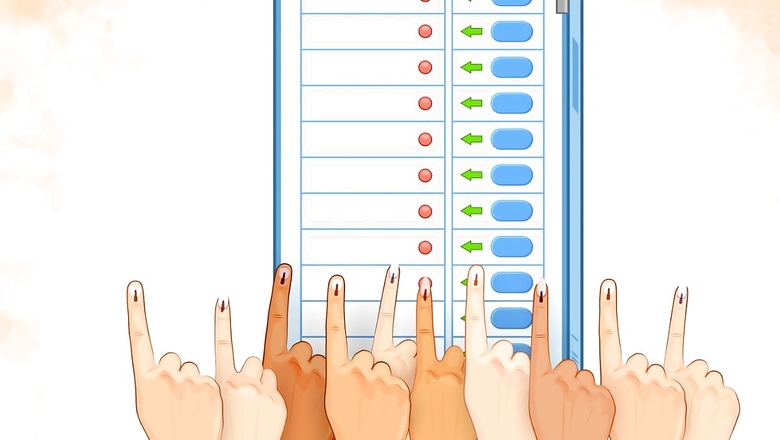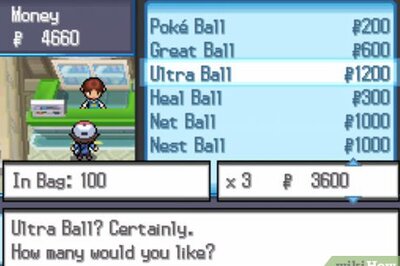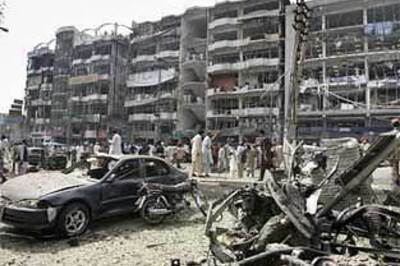
views
The West Delhi Lok Sabha constituency, one of the 7 parliamentary constituencies in New Delhi, falls under the General category. It encompasses parts of Southwest Delhi and West Delhi districts. Currently, it comprises 10 Legislative Assembly segments, including Madipur (SC), Rajouri Garden, Hari Nagar, Tilak Nagar, Janakpuri, Vikaspuri, Uttam Nagar, Dwarka, Matiala, and Najafgarh, spanning both West Delhi and Southwest Delhi districts. Voting for the West Delhi Lok Sabha constituency will take place in the sixth phase of polls on May 25. The counting of votes will take place on June 4.
Current MP: Parvesh Sahib Singh Verma of the BJP since 2014, preceded by Mahabal Mishra of Congress
Candidates: Kamaljeet Sehrawat (BJP), Mahabal Mishra (AAP)
Political Dynamics
BJP in Pole Position
The BJP has nominated fresh face Kamaljeet Sehrawat who is an ex-Mayor of the South Delhi Municipal Corporation. She resides in Dwarka and has been spending her campaign interacting and engaging with the electorate. Interestingly, sitting MP Parvesh Sahib Singh Verma has not been granted a ticket despite being a firebrand leader who won the seat in 2019 by a historic margin of 5.78 lakh votes. It is being said that Verma, a formidable contender for state-level leadership of the party, will focus his energies on the upcoming assembly election, which its rival AAP generally dominates.
Sehrawat comes from the Jat community and is expected to draw Jat voters who form a sizable chunk of the electorate often playing the role of kingmakers. She is said to have a considerable hold in Dwarka constituency. Moreover, the BJP candidate is contesting on the plank of development, promising expedited completion of delayed projects, improved traffic congestion and enhanced civic infrastructure. Her ‘blueprint’ for West Delhi entails plans for constructing new parks, sports facilities, and community halls. She has pledged to repair roads and improve the area’s water supply.
Sehrawat is banking on the popularity of Prime Minister Modi. The Modi wave, though not as intense as in 2019, is prevalent in the constituency with several voters already having made up their minds with national issues in focus. There is widespread approval in the constituency for the Modi government’s approach towards relations with Pakistan, improved national security and the removal of Article 370 in Jammu and Kashmir. Moreover, PM Modi’s push for the Ram Mandir movement further bolsters the chances of the BJP.
Welfare schemes such as the Awas Yojana, Garib Kalyan Yojana which involves free ration, Kisan Samman Nidhi and Ayushman Bharat have been implemented widely, leading to favourable conditions for the central leadership in Delhi. Meanwhile, the Dwarka Expressway, a portion of which was inaugurated by PM Modi continues to be under construction.
The construction of the eight-lane elevated Dwarka Expressway on NH48, praised as a solution for traffic by Union Transport Minister Nitin Gadkari, had been delayed for years until the Modi government decided to expedite it. This project, which links Dwarka to the Kherki Daula toll plaza in Gurugram, Haryana, was initiated in 2006 with a budget of ₹7,500 crore. Although the Haryana segment of the expressway was opened in March this year, West Delhi residents are eagerly anticipating its completion. The project has already increased property values, benefiting local residents.
A significant drawback for the party is that the local AAP government has electorally dominated in the region when it comes to assembly elections. The BJP does not have a single MLA in this constituency. However, pockets of discontentment against the local AAP government could be leveraged by the BJP, even as the general mood— ‘Kejriwal for Delhi, Modi for Desh’ remains in East Delhi. Moreover, there is a section of voters who are unhappy with the AAP alliance with the Congress. With anti-Congress sentiments still prevalent in much of the electorate, the BJP hopes to make the most of it in its campaign rallies.
Statistically, the BJP, with 60.4% of the vote share in 2019 has a solid advantage against the AAP-Congress alliance who together bagged 37.7% of the vote share. The BJP is further cushioned by the sheer volume of its winning margin of 5.78 lakh votes.
AAP’s Formidable Challenge
The AAP has nominated ex-Congress leader Mahabal Mishra, who was removed from the party for ‘anti-party’ activities in 2020 and joined the AAP in 2022. Mishra is a former MP and well-known Purvanchali face, who is expected to be an appealing option for the large population of Purvanchali voters originally hailing from Uttar Pradesh and Bihar.
Mahabal Mishra is a senior leader, having served as the MP from West Delhi between 2009 and 2014. Prior to his parliamentary tenure, he was an MLA for the Dwarka Assembly constituency in New Delhi. Mishra began his political journey as a councillor for the Municipal Corporation of Delhi, representing the Dabri ward in 1997. He was subsequently elected as an MLA from the Nasirpur assembly constituency in the 1998 Delhi assembly elections and successfully retained his seat in the 2003 and 2008 elections.
Mishra has made similar promises as his BJP counterpart, focusing on development, improving metro connectivity and easing traffic on roads. He is bolstered by the Kejriwal effect, and the fact that all ten AAP leaders are involved in the campaign for his election. However, the Congress is not as deeply involved in the campaign with several local Congress leaders, having traditionally perceived it as a rival, are still at odds with the AAP. It is also being speculated whether Mishra who fell out with Congress has their complete support this election.
Meanwhile, it remains to be seen what effect Chief Minister Arvind Kejriwal’s arrest with regards to the liquor excise case has on the electorate. Among supporters, there is a considerable wave of sympathy and the belief that vendetta politics is at play, while the CM calls on voters to ensure that the BJP is wiped out.
However, the party has a disadvantage when it comes to general elections where local issues take a backseat, with BJP taking a significant lead in 2019, and the AAP-Congress combine failing to match up. All in all, when it comes to selecting the central government leadership, voters are swayed more by the Prime Minister than any other factor.
Key Issues
Metro Connectivity
The metro connectivity in Northwest and West Delhi has not quite taken speed as has been the case with the rest of Delhi. People living Qutubgarh, Burari, and areas beyond Dwarka have accused the state and central governments of unfulfilled promises made 10 years ago in regard to metro connectivity. A large part of the constituency beyond Rithala finds itself cut off from the rest of Delhi, with commuters having no choice but to travel to far-flung stations like Samaypur Badli or Mundka to avail the metro’s services.
Roads
The condition of roads in Northwest and West Delhi, especially in the hinterlands of Narela, Qutubgarh, Rithala and Bawana in Northwest and Rohini and Dwarka in the West. According to reports, the roads are in disrepair, and there is a problem of parking vehicles as no designated parking spaces are available. The Outer Ring Road beyond the Bhalswa landfill towards Rohini and Mundka is heavily congested at all times and regularly disrupted by stray cattle. This cramming is attributed to ongoing construction of flyovers and Delhi Metro lines, but it forces residents, who have to rely on personal vehicles for lack of public transport, to suffer daily.
Delhi Master Plan
The Delhi master plan has come under heavy criticism for failing to understand the local issues and being unable to solve the issue of decentralisation of the various local authorities. The issue is more pronounced in West and Northwest Delhi where disputes between MCD, PWD and DDA have led to stagnant development in the region. The MCD and PWD fall under the state’s jurisdiction and the DDA under the central government. The infighting between these authorities based on political lines has become a nuisance for the people. While the current candidates have promised to provide for a solution, how it pans out remains to be seen.
Civic Infrastructure
Availability of civic amenities and a lack of civic infrastructure is a major issue in both Northwest and West Delhi constituencies. Clogged drains, lack of public transport, bad condition of roads, unavailability of adequate public healthcare infrastructure, and sanitation issues persist heavily in both the constituencies. These issues are more pronounced in hinterlands and outskirts of the constituencies. In Rohini sector 7 people have complained about the stagnation of development in the region. There are no parking facilities, the community centres are not up to standards and there are no parks in the area. People in Mangolpuri live in slums and have been agitated for the lack of water, electricity, educational infrastructure and paved roads in the area.
Water Crisis
Water Crisis in both the constituencies have worsened over the years. People in many areas such as Sector 15 in Rohini, rural areas of Qutubgarh, Mangolpuri and many others are still not connected with pipelines. Even when they are, there is no water supply. People have to stand in long queues and wait for Water tankers to fulfill their daily water needs. Places in West Delhi have complained about unsanitary, contaminated water or mucky water flowing through the pipes and into their homes.
Delayed Projects
Residents of the West Delhi Lok Sabha constituency express disappointment with the slow progress of several development projects, which have become more of an inconvenience than a benefit. Promised developments, including the Punjabi Bagh flyover, the Hastsal hospital in Uttam Nagar, and sections of the Dwarka Expressway and Urban Extension Road II, remain incomplete despite years of anticipation. The 690-bed Hastsal-Vikaspuri hospital, despite claims of completion in June 2022, remains unfinished, although its foundation stone was laid 18 years ago. Construction began in 2019, with plans for two additional hospitals in Madipur and Jwalapuri as part of the ₹211-crore project. These two hospitals are also under development, leaving voters frustrated with the lack of progress and the inconveniences caused by unfinished projects.
Traffic Congestions
Traffic congestion in both constituencies has been termed as worse than ever by the people. Disruptions by stray cattle and ongoing projects which have been delayed for years, causing congestions. The construction of the Punjabi Bagh flyover and the digging of land for the metro in the area have increased travel time on a road that has been damaged for years. Because of construction works, all the roads are perpetually blocked, and because of that, people are unable to avail of cab or delivery services. Even auto rickshaws don’t want to ply there because of traffic.
Infrastructure Development
Delhi Metro Rail Corporation’s Phase IV
The 26.46-km network will have 21 stations, and a separate project report for extending the Rithala-Narela corridor till Kundli in Haryana has also been completed and submitted for approval. It will also connect Rithala, Bawana and Narela.
Dwarka Expressway
It is an under construction 16 lane expressway that will connect Dwarka in Delhi with Kherki Daula Toll Plaza, Gurgaon. PM Modi had inaugurated the project in March this year. The total cost of the project is Rs. 7500 crores.
Delhi Urban Extension Road 2
It is an upcoming mega project which will connect Rohini, Mundka, Najafgarh, and Dwarka while passing through Alipur. It was conceived by the DDA in 2021 and will help alleviate the traffic congestion in the region.
Road Infrastructure
In January this year, PWD minister Atishi announced the upgradation and maintenance of several roads in West Delhi constituency. Service lanes of Rohtak Road (NH-10) from Metro pillar 109 to 273, Road No. 41 and 77, as well as the stretch from Paschim Puri Chowk to New Slum Quarters in Multan Nagar are some of the roads which will be serviced.
Railway Infrastructure
Circulating areas were enhanced with parking lots, beautification, and waiting halls. New mini platform shelters, water booths, and water coolers were added at various stations. High mast lighting with MPLAD was installed at Narela Railway station. Three roads under bridges were constructed at level crossings. A new foot over bridge with an escalator and lift facility was built connecting platforms 1 & 2 and a metro station at Badli. Foot over bridges at Gheora and Mangolpuri stations were completed. Solar lights were installed at both platforms. Passenger amenities were improved with the addition of toilet blocks, mini platform shelters, water booths, water coolers, and a high mast tower with LED luminaries. Stainless steel benches were installed at Narela railway station, and LED luminaries replaced conventional type luminaries in circulating areas, station buildings, and platforms.
Voter Demographics
Total Voters: 25.87 lakh
Urban Voters: 100%
Rural Voters: 0%
Literacy Rate: 77.54%
Social Composition:
SC: 14.36%
ST: 0%
Religious Composition:
Hindu: 94%
Muslim: 5.4%
Explore in-depth coverage of Lok Sabha Election 2024 Schedule, Voter Turnout, Upcoming Phase And Much More At News18 Website




















Comments
0 comment